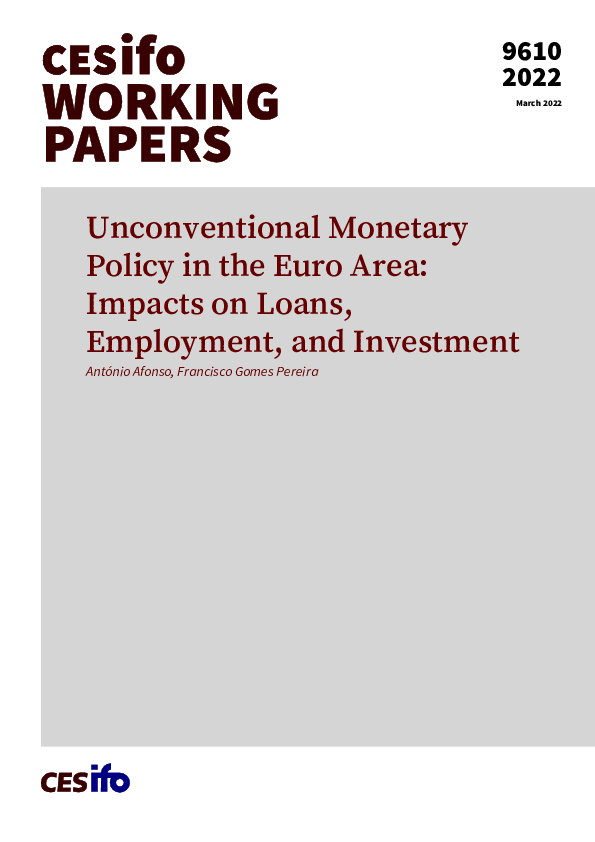Unconventional Monetary Policy in the Euro Area. Impacts on Loans, Employment, and Investment
CESifo, Munich, 2022
CESifo Working Paper No. 9610

Using a difference-in-differences identification strategy on a micro panel at the bank and firm level, we study the transmission effectiveness of ECB’s large-scale asset purchasing programs programs (i.e. APP and PEPP) in the Euro area. Our findings show: first, balance sheet composition of banks is an important determinant of monetary policy transmission. We tested this hypothesis by showing that banks more exposed to government debt securities had higher loan growth than less exposed banks after the APP announcement. By extension, this could lead to heterogeneous economic impacts depending on the geographical location of exposed banks. For the PEPP, contrary to the APP, we did not find a portfolio-rebalancing channel for banks that were more exposed to government debt securities. Second, using balance sheet data on corporates, we verify that firms that borrowed more increased employment and fixed capital investment, albeit to a lesser degree than before the APP announcement. Furthermore, our sample shows that corporations in countries with banks more exposed to government debt securities had higher borrowing growth and fixed capital growth versus countries with less exposed banks.
Monetary Policy and International Finance